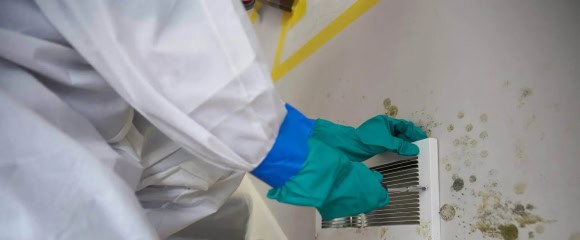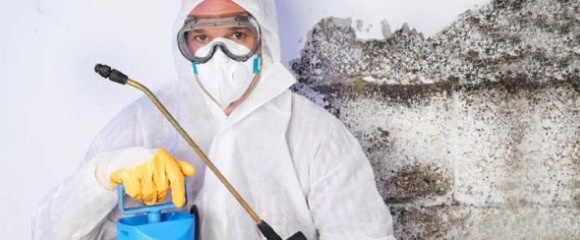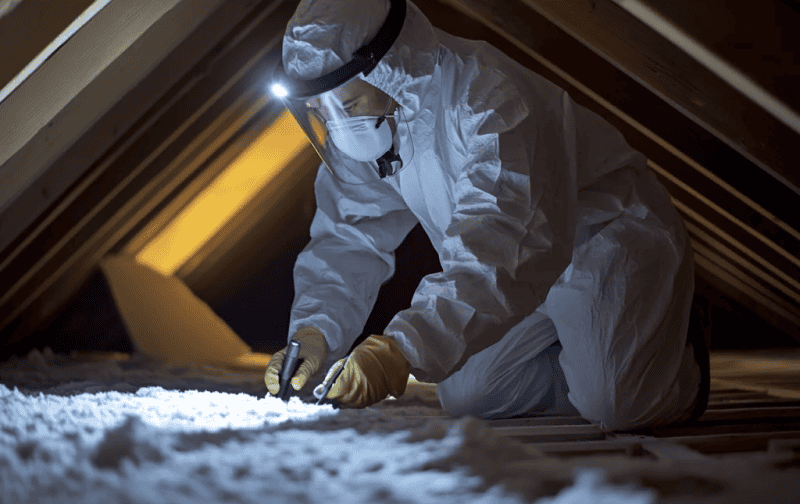Mold Remediation in Atlas, MI
Mold Remediation in Atlas is essential for maintaining a healthy living environment. Mold can develop quickly in damp areas, posing serious health risks to you and your family. Whether it's due to a leaky roof, flooding, or high humidity, addressing mold issues promptly is crucial to prevent further damage to your property and ensure the safety of your loved ones.
At Disaster Response, we understand the urgency of mold problems. Our team of experts is equipped with the latest technology and techniques to identify and eliminate mold effectively. We conduct thorough inspections to assess the extent of the mold growth and develop a tailored remediation plan that addresses your specific needs. Our goal is to restore your home to a safe and healthy condition as quickly as possible.
Mold can not only damage your property but also lead to various health issues, including respiratory problems and allergies. That's why our mold remediation services in Atlas focus on not just removing the visible mold but also addressing the underlying moisture issues that allow mold to thrive. We take a comprehensive approach to ensure that your home is not only mold-free but also protected against future infestations.
Choosing Disaster Response means you're opting for professionalism and expertise in mold remediation. Our dedicated team is committed to providing exceptional service, ensuring that your home is safe and comfortable. Don't let mold compromise your health and property—contact us today for a thorough assessment and effective remediation solutions tailored to your needs.

- Disaster Response: The Authority on Atlas Mold Remediation
- Disaster Response: The Leading Authority on Mold Remediation in Atlas
- Mold Testing and Remediation Overview: Following IICRC S520 Standards
- Do You Really Need a Mold Remediation Expert in Atlas?
- Reach Out to a Mold Remediation Specialist in Atlas, MI, for These Mold-Related Issues
- Essential Steps to Take After Discovering Mold in Your Home in Atlas
Disaster Response, The Authority on Atlas Mold Remediation
Finding a reliable mold remediation service in Atlas, MI, can be overwhelming, but with Disaster Response, the choice becomes clear. With years of experience in the industry, we specialize in effectively eliminating mold and restoring your home or business to a safe environment. Our dedicated team understands the health risks associated with mold exposure and is committed to providing thorough and efficient remediation services.

At Disaster Response, we utilize advanced techniques and state-of-the-art equipment to identify and remove mold from your property. Our experts conduct comprehensive inspections to assess the extent of the mold problem, ensuring that no hidden spores are left behind. We prioritize your safety and well-being, employing environmentally friendly products that are safe for both your family and the planet.
Our commitment to excellence extends beyond just mold removal. We also focus on preventing future mold growth by addressing the underlying causes, such as moisture issues and inadequate ventilation. Our team provides valuable advice on maintaining a mold-free environment, empowering you to take proactive steps in safeguarding your property.
Like the iconic landmarks in Atlas, MI, we stand as a beacon of hope for those facing mold challenges. Our expertise and dedication to customer satisfaction set us apart in the mold remediation industry.
As true specialists in Atlas mold remediation, we focus exclusively on the following services
- Comprehensive Mold Inspections
- Mold Removal and Cleanup
- Air Quality Testing
- Moisture Control Solutions
- Preventative Treatments
- Structural Drying and Dehumidification
- Post-Remediation Verification
- Emergency Response Services
- Residential and Commercial Services
- Consultation and Education on Mold Prevention
At Disaster Response, we strive to be THE authority on mold remediation in Atlas. We understand the urgency of addressing mold issues and are here to provide swift, effective solutions. When you choose our services, you can trust that we will restore your space to a safe and healthy condition, allowing you to breathe easy once again.

Disaster Response: The Leading Authority on Mold Remediation in Atlas
Finding a reliable mold remediation service in Atlas can be overwhelming, but with Disaster Response, the choice is clear. With years of experience in the industry, we specialize in effectively identifying and eliminating mold issues, ensuring a safe and healthy environment for our clients. Our dedicated team understands the complexities of mold growth and is committed to providing top-notch service tailored to your specific needs.

At Disaster Response, we utilize advanced techniques and state-of-the-art equipment to assess and remediate mold infestations. Our experts are trained to handle various types of mold, from common household varieties to more hazardous species, ensuring that your property is thoroughly treated. We prioritize safety and efficiency, working diligently to restore your space to its original condition while minimizing disruption to your daily life.
Our comprehensive approach includes not only the removal of mold but also addressing the underlying causes of moisture that contribute to its growth. We believe in educating our clients about mold prevention and maintenance, empowering them to take proactive steps in safeguarding their homes or businesses. With our commitment to excellence, you can trust that your mold remediation project is in capable hands.
As a leading provider of mold remediation services in Atlas, we pride ourselves on our customer-centric approach. We understand that dealing with mold can be stressful, which is why we strive to make the process as seamless as possible. Our team is here to guide you every step of the way, ensuring that you feel supported and informed throughout the entire remediation process.
- Comprehensive Mold Inspections
- Mold Removal and Cleanup
- Air Quality Testing
- Moisture Control Solutions
- Preventative Treatments
- Structural Drying and Dehumidification
- Post-Remediation Verification
- Emergency Response Services
- Residential and Commercial Services
- Consultation and Education on Mold Prevention
At Disaster Response, we are dedicated to being the leading authority on mold remediation in Atlas. Our expertise and commitment to customer satisfaction set us apart in the industry. When you choose us, you can rest assured that we will restore your property to a safe and healthy state, allowing you to breathe easy once again.
Mold Testing and Remediation Overview: Following IICRC S520 Standards
The IICRC S520 standard provides a clear guide for safely managing mold issues in homes and buildings. Its main goals are to protect people, ensure thorough cleanup, and prevent future mold problems.
1. Assessment and Inspection
Initial Assessment:
- Trained professionals will conduct a detailed inspection of the affected area. This includes visual checks and using tools like moisture meters and infrared cameras to find hidden mold or moisture.
- Understanding moisture sources is crucial, as mold often arises from water issues or high humidity.
Mold Sampling:
- Although not always needed, testing (both air and surface samples) can help identify the type and amount of mold present.
- Sampling is useful when mold is suspected but not visible, such as when there are odors or health concerns.
- If sampling is done, it must follow proper protocols, with analysis performed by accredited labs.
2. Containment Protocols
Containment Procedures:
- To stop mold spores from spreading during cleanup, barriers (like plastic sheeting and negative air pressure) are used.
- The extent of containment varies; small areas might require basic barriers, while larger or heavily contaminated spaces need more extensive containment.
- Workers must enter and exit through decontamination chambers to avoid spreading mold.
3. Personal Protective Equipment (PPE)
- Workers should wear appropriate PPE, including gloves, N95 masks, full-body suits, and eye protection.
- The type of PPE needed depends on how severe the contamination is; more protective gear may be required for heavily affected areas.
4. Remediation Process
Source Control:
- Addressing the root cause of moisture is essential. This may involve fixing leaks, improving ventilation, or managing humidity.
Cleaning and Removal of Mold:
- Mold cannot just be treated with chemicals; it must be physically removed.
- Non-porous materials (like metals and glass) can often be cleaned with HEPA vacuums or damp cloths.
- Severely affected porous materials (like drywall and carpets) should be removed and disposed of according to local regulations.
- HEPA air filtration systems should be used to capture airborne mold spores during cleanup.
Cleaning Techniques:
- Common methods include HEPA vacuuming and scrubbing surfaces where mold is present.
- Antimicrobial agents may be used, but the focus is on physical removal.
5. Post-Remediation Evaluation
Final Inspection:
- After cleanup, a visual inspection ensures no visible mold remains.
- Air and surface tests may be conducted to confirm that mold levels are back to normal.
- It's crucial to check that the environment is dry to prevent mold from returning.
Documentation and Reporting:
- Detailed records of the remediation process, including testing results and cleanup procedures, should be maintained.
- This documentation is important for compliance and may be needed for insurance or legal matters.
6. Ongoing Prevention
- Educating building occupants about moisture control is vital. This includes maintaining HVAC systems, managing humidity, and promptly addressing leaks.
By adhering to the IICRC S520 standard, mold remediation professionals take a systematic and health-focused approach, ensuring that indoor spaces are restored to safe, mold-free conditions.
Do You Really Need, Need a Mold Remediation Expert in Atlas?
While it may be tempting to tackle mold issues on your own, hiring a professional mold remediation service can ensure a thorough and effective solution. Mold can pose serious health risks and structural damage to your home, making it crucial to address the problem with expertise. Disaster Response specializes in mold remediation, providing the knowledge and tools necessary to restore your environment safely and efficiently.

Understanding the Mold Remediation Process
Mold remediation involves a systematic approach to identify, contain, and eliminate mold growth. Professionals like those at Disaster Response utilize advanced techniques and equipment to assess the extent of the mold infestation. This process includes air quality testing, surface sampling, and moisture control measures to prevent future growth. By understanding the specific conditions that led to mold development, experts can implement effective solutions tailored to your situation.

Health Risks Associated with Mold Exposure
Mold can lead to a variety of health issues, particularly for individuals with respiratory conditions, allergies, or weakened immune systems. Symptoms may include coughing, sneezing, skin irritation, and even more severe reactions in sensitive individuals. Engaging a mold remediation expert ensures that the mold is not only removed but that the air quality in your home is restored to a safe level, protecting the health of your family.

Preventing Future Mold Growth
After remediation, it's essential to take proactive steps to prevent mold from returning. Disaster Response provides guidance on moisture control, ventilation improvements, and regular inspections to maintain a mold-free environment. By addressing the underlying causes of mold growth, such as leaks or high humidity, you can significantly reduce the risk of future infestations.

The Importance of Professional Equipment and Techniques
Attempting to remove mold without the proper equipment can lead to incomplete removal and potential health hazards. Professionals use specialized tools such as HEPA vacuums, air scrubbers, and moisture meters to ensure thorough remediation. Disaster Response's trained technicians are equipped to handle even the most challenging mold situations, ensuring that your home is restored to a safe and healthy state.


Dustin Anger
Bio Star Disaster Restoration Services
Disaster Response Introducing Bio Star Disaster Restoration Services: The Premier Choice for Emergency Clean-Up**
At Disaster 911, we're elevating the standard with ( Bio Star Disaster Restoration Services ), our trusted go-to contractor for emergency clean-up services. While others may settle for the status quo, ( Bio Star Disaster Restoration Services ) takes an innovative approach to restoration.
From water and fire damage to mold remediation, ( Bio Star Disaster Restoration Services ) doesn't just follow industry norms-they set new ones. Our rigorous vetting process ensures that ( Bio Star Disaster Restoration Services ) exceeds expectations, delivering cutting-edge solutions for your emergency needs.
When you choose Disaster 911 and ( Bio Star Disaster Restoration Services ), you're opting for a dynamic partnership that prioritizes effective, next-level recovery. Don't settle for the ordinary-when disaster strikes, choose the best in emergency response.
 1267 Belsay Rd, Burton, MI 48509
1267 Belsay Rd, Burton, MI 48509
 Call Us
Call Us
Reach Out to a Mold Remediation Specialist in Atlas, MI, for These Mold-Related Issues
Mold growth can occur in various environments, particularly in areas with high humidity or water damage. This fungal growth can lead to significant health risks, property damage, and unpleasant odors. Recent studies have shown an increase in mold-related issues in Atlas, with many homeowners facing challenges in managing and eliminating mold effectively. If you find yourself dealing with any of the following mold situations, it's crucial to contact a mold remediation expert promptly:
Visible Mold Growth
If you notice mold on walls, ceilings, or other surfaces, it's a clear sign that professional intervention is needed. Mold can spread quickly and may indicate underlying moisture problems.
Musty Odors
A persistent musty smell in your home can be a strong indicator of hidden mold. This odor often suggests that mold is present, even if it's not immediately visible.
Water Damage
Following a leak, flood, or any water intrusion, the risk of mold growth increases significantly. It's essential to address any water damage promptly to prevent mold from taking hold.
Health Symptoms
If you or your family members are experiencing unexplained respiratory issues, allergies, or skin irritations, mold exposure could be the culprit. Seeking professional help can ensure a safe living environment.
Condensation Issues
Excessive condensation on windows, walls, or pipes can create a breeding ground for mold. Addressing these issues with a mold remediation service can help prevent future growth.
Previous Mold Problems
If you've dealt with mold in the past, it's vital to monitor the area for any signs of recurrence. A professional can assess the situation and implement preventive measures.
Regardless of the mold issue you're facing, it's important to understand that Atlas residents should act quickly to mitigate the risks associated with mold exposure. Mold can not only damage your property but also pose serious health risks to you and your family. Engaging a qualified mold remediation specialist like Disaster Response can provide the expertise needed to effectively eliminate mold and restore your home to a safe condition.
Essential Steps to Take After Discovering Mold in Your Home in Atlas
Finding mold in your home can be alarming and overwhelming. Mold can grow quickly and pose health risks, so it's crucial to act promptly. Here are the steps you should follow if you discover mold in your Atlas residence:
- Identify the source of moisture that is causing the mold growth.
- Ensure the affected area is well-ventilated to minimize exposure.
- Avoid touching or disturbing the mold, as this can release spores into the air.
- Document the extent of the mold growth with photographs for your records.
- Contact a professional mold remediation service to assess the situation.
- Follow any safety recommendations provided by the remediation experts.
- Keep children and pets away from the affected area until it has been treated.
- Review your home's ventilation and humidity levels to prevent future mold growth.
If you find mold in your home, it's essential to address it quickly to protect your health and property. Mold can lead to various health issues, including respiratory problems and allergic reactions. At Disaster Response, we specialize in mold remediation and are dedicated to restoring your home to a safe and healthy environment.
Contact Your Local Mold Remediation Experts in Atlas, MI, for a Free Consultation
At Disaster Response, we understand the stress and uncertainty that comes with mold issues. Our team is committed to providing you with the highest level of service and support during this challenging time. We approach every situation with professionalism, care, and urgency.
Our mold remediation specialists will work diligently to identify the source of the mold, safely remove it, and implement measures to prevent its return. When your home's safety and your family's well-being are at stake, don't settle for anything less than the best—choose Disaster Response today.
Contact Your Emergency
Disaster Response Now!
Latest News in Atlas, MI
Ask the expert: Keep an eye out for comet Tsuchinshan-Atlas this weekend
MSUToday | Michigan State Universityhttps://msutoday.msu.edu/news/2024/ask-the-expert-keep-an-eye-out-for-comet-Tsuchinshan-Atlas-this-weekend
Oct. 11, 2024Because of their high visibility and bright, long tails, nothing piques people’s interest in the universe quite like comets. With comet Tsuchinshan-Atlas reaching its peak viewing in the evening on Oct. 13, Shannon Schmoll, director of Abrams Planetarium at Michigan State University, tells us eve...
Oct. 11, 2024
Because of their high visibility and bright, long tails, nothing piques people’s interest in the universe quite like comets. With comet Tsuchinshan-Atlas reaching its peak viewing in the evening on Oct. 13, Shannon Schmoll, director of Abrams Planetarium at Michigan State University, tells us everything we need to know about these icy celestial leftovers.
Answers are excerpts from an article originally published in The Conversation.
Comets are leftover material from the formation of the solar system. When the solar system formed about 4.5 billion years ago,most of the gas, dust, rock and metal ended up in the sun or the planets.
Everything that was left became comets and asteroids.
Because comets are clumps made of rock, dust, ice and the frozen forms of various gases and molecules, they are often called “dirty snowballs” or “icy dirtballs” by astronomers.
As a comet moves close to the sun, it heats up. The various frozen gases and molecules making up the comet change directly from solid ice to gas in a process called sublimation. This sublimation process releases dust particles trapped under the comet’s surface.
The dust and released gas form a cloud around the comet called a coma. This gas and dust form two different tails.
The first tail, made up of gas, is called the ion tail. The sun’s radiation strips electrons from the gases in the coma, leaving them with a positive charge. These charged gases are called ions. Wind from the sun pushes these charged gas particles directly away from the sun, forming a tail that appears blue in color. The blue color comes from large numbers of carbon monoxide ions in the tail.
The second tail, called the dust tail, forms from the dust particles released during sublimation. This tail is pushed away from the sun by pressure caused by the sun’s light. The tail reflects the sunlight and swoops behind the comet as it moves, giving the comet’s tail a curve.
The closer a comet gets to the sun, the longer and brighter its tail will grow. One comet tail measured approximately half a million miles long!
An object will orbit faster the closer it is to the sun, as angular momentum is conserved. Think about how an ice skater spins faster when they bring their arms in closer to their body — similarly, comets speed up when they get close to the sun. Otherwise, comets spend most of their time moving relatively slowly through the outer reaches of the solar system.
A lot of comets likely originate in a far-out region of our solar system called the Oort cloud.
Comets from the Oort cloud take over 200 years to complete their orbits, a metric called the orbital period. Because of their long periods, they’re called long-period comets. Astronomers often don’t know much about these comets until they get close to the inner solar system.
Short-period comets, on the other hand, have orbital periods of less than 200 years. Halley’s comet is a famous comet that comes close to the sun every 76 years.
Comets’ time in the inner solar system is relatively short, generally on the order of weeks to months.
As they approach the sun, their tails grow, and they brighten before fading on their way back to the outer solar system.
But even the short-period comets don’t come around often, and all of this makes their behavior difficult to predict.
By: Evan Katz
8 Prettiest Towns to Visit in Michigan
WorldAtlashttps://www.worldatlas.com/cities/8-prettiest-towns-to-visit-in-michigan.html
Michigan sits in the heart of the American Midwest and touches four of the five Great Lakes, making it an unmatched destination for natural beauty and outdoor recreation. The aptly-nicknamed “Great Lakes State” is home to bustling ...
Michigan sits in the heart of the American Midwest and touches four of the five Great Lakes, making it an unmatched destination for natural beauty and outdoor recreation. The aptly-nicknamed “Great Lakes State” is home to bustling cities like Detroit, but also some of the most picturesque small towns in America. From charming coastal communities to quaint inland havens, here is a guide to eight of the prettiest small towns in Michigan.
St. Joseph
Located where the St. Joseph River enters Lake Michigan, St. Joseph has transformed from a thriving port into a lakeside destination that offers both scenic beauty and historical richness. The lakeside area, known as Silver Beach, offers unparalleled sunset views and is home to an iconic lighthouse, a restored historic carousel, a spray park, a public beach, and more. Downtown St. Joseph, which overlooks Silver Beach—and those fantastic lake sunsets—from the bluff, is brimming with boutique shops, cozy cafes, and delightful restaurants. Check out the House of David Museum for an interesting look at a quirky piece of St. Joseph history.
Calumet
Set on the Keweenaw Peninsula in the western part of Michigan’s Upper Peninsula, Calumet is an isolated getaway that is steeped in copper mining history. Its well-preserved historical architecture, contained within two National Historic Districts that encompass practically the entire downtown, provides a glimpse into its prosperous past. Enjoy the historic beauty and a show at the Calumet Theatre, which has been hosting performances since 1900. From there, explore the region’s mining heritage at nearby Keweenaw National Historical Park, then take a short drive to soak up the natural beauty—particularly during autumn—at Queen Anne’s Falls or Black Creek Nature Sanctuary.
Frankenmuth
Known as “Little Bavaria,” Frankenmuth was founded by southern German immigrants in the 1840s and remains famous for its German-inspired architecture and festive atmosphere. This town is perfect if you enjoy a bit of European charm with your Midwestern hospitality! The Bavarian-style buildings are adorned with intricate details, and Bronner’s Christmas Wonderland, the “World’s Largest Christmas Store,” is a year-round attraction for visitors. Frankenmuth hosts a great Oktoberfest in autumn and a delightful “Christkindlmarkt” (holiday market) in December, but you can enjoy authentic German foods and crafts any time of year.
Mackinac Island
Spending a day on Mackinac Island is like traveling decades into the past, back to a quieter and slower-paced style of life. Situated in Lake Huron between Michigan's Upper and Lower Peninsulas, the island is famously automobile-free and accessible only by ferry boat. Minus cars, its streets are lively with bicycles, horse-drawn carriages, and pedestrians, especially during the summer tourist season. The island's homes, businesses, and hotels have retained their 19th-century charm, with the opulent 1887 Grand Hotel being a standout example. Enjoy a kayak trip along the shore to get a unique view of this distinctly nostalgic island community.
Niles
Niles, the “City of Four Flags,” is a charming southwestern Michigan town with a rich cultural heritage. Take a walking tour to explore Niles’ nice collection of historic homes and architectural highlights such as the Greek Revival-style public library and lovely 1892 train station. Plan your trip for early autumn to experience the annual Four Flags Apple Festival, which celebrates the town’s agricultural roots with apple-themed activities, crafts, and treats. You can also enjoy the fall foliage along routes to Chicago (90 miles), Lake Michigan (25 miles), and the University of Notre Dame (10 miles).
Petoskey
Petoskey, located on the northern coast of Michigan’s Lower Peninsula, offers stunning views of Little Traverse Bay. The lovely blue-water shores of the bay also draw visitors seeking Petoskey stones, beautifully distinctive pieces of ancient fossilized coral that are the official state stone of Michigan. Back in town, Petoskey’s downtown district is dotted with charming boutiques, art galleries, and cafes, making it a delightful place to spend an afternoon. As a longtime resort destination, Petoskey and its surroundings also offer great accommodations, ranging from quaint bed-and-breakfasts to Victorian cottages to the grand Hotel Walloon.
Marquette
With 20,000 residents, Marquette rates as the “big city” of Michigan’s Upper Peninsula, yet it is definitely a small town at heart. Nestled on the shores of Lake Superior, the town serves as a hub for outdoor enthusiasts. Marquette’s beautiful parks, such as Presque Isle Park and Mattson Lower Harbor Park, offer stunning lake views and ample opportunities for hiking, biking, and kayaking. The historic downtown area features a variety of shops, restaurants, and cultural attractions, including the Marquette Maritime Museum. Meanwhile, ghost hunters can explore the possibly haunted grounds of the Old Catholic Cemetery and Holy Cross Orphanage.
New Buffalo
New Buffalo, located along the southeastern shore of Lake Michigan, has long been a popular getaway for residents of Chicago, which is about a 70 mile drive and visible across the lake on a clear day. Known for its sandy town beach, vibrant marina, and sunset views, New Buffalo’s waterfront offers ample opportunities for boating, fishing, and relaxing by the lake. Whitaker Street, which leads right to the waterfront, anchors a postcard-pretty downtown that is lined with shops and eateries. Local food favorites include Redamak’s hamburgers and Oink’s ice cream, and you can walk off some calories at nearby Warren Dunes State Park
From the historic charm of Calumet and Niles, to the Bavarian beauty of Frankenmuth, to the natural splendor of Copper Harbor, Michigan’s small towns offer something for everyone. Whether you are searching for a lakeside retreat with breathtaking vistas, seeking out authentic local cuisine, or amassing a photo collection of historic architecture, these eight beautiful small towns are sure to captivate you and inspire further exploration of the Great Lakes State.
Share
Disclaimer:


 Call us 877-451-9251
Call us 877-451-9251 Request Information
Request Information